In the exquisite carved and gilded frames that hung on the wall above the horizon lineis the matted and stained sheep’s wool. Dirty as it seems, the wool was taken from stray sheep wandering around the village of Ru-Sa-Me-Lae, a small village in Pattani. Pattani is one of the three provinces (Pattani, Yala and Narathiwat) in the Deep South or the Patani region, the southernmost part of Thailand. It is a predominantly Islamic region where the protracted conflict between the Thai state and the militants aiming to liberate Patani and establish a Malay Islamic State, Patani Darussalam, has been consuming thousands of lives for decades. The Deep South has long been a subject of study of violence and state oppression.
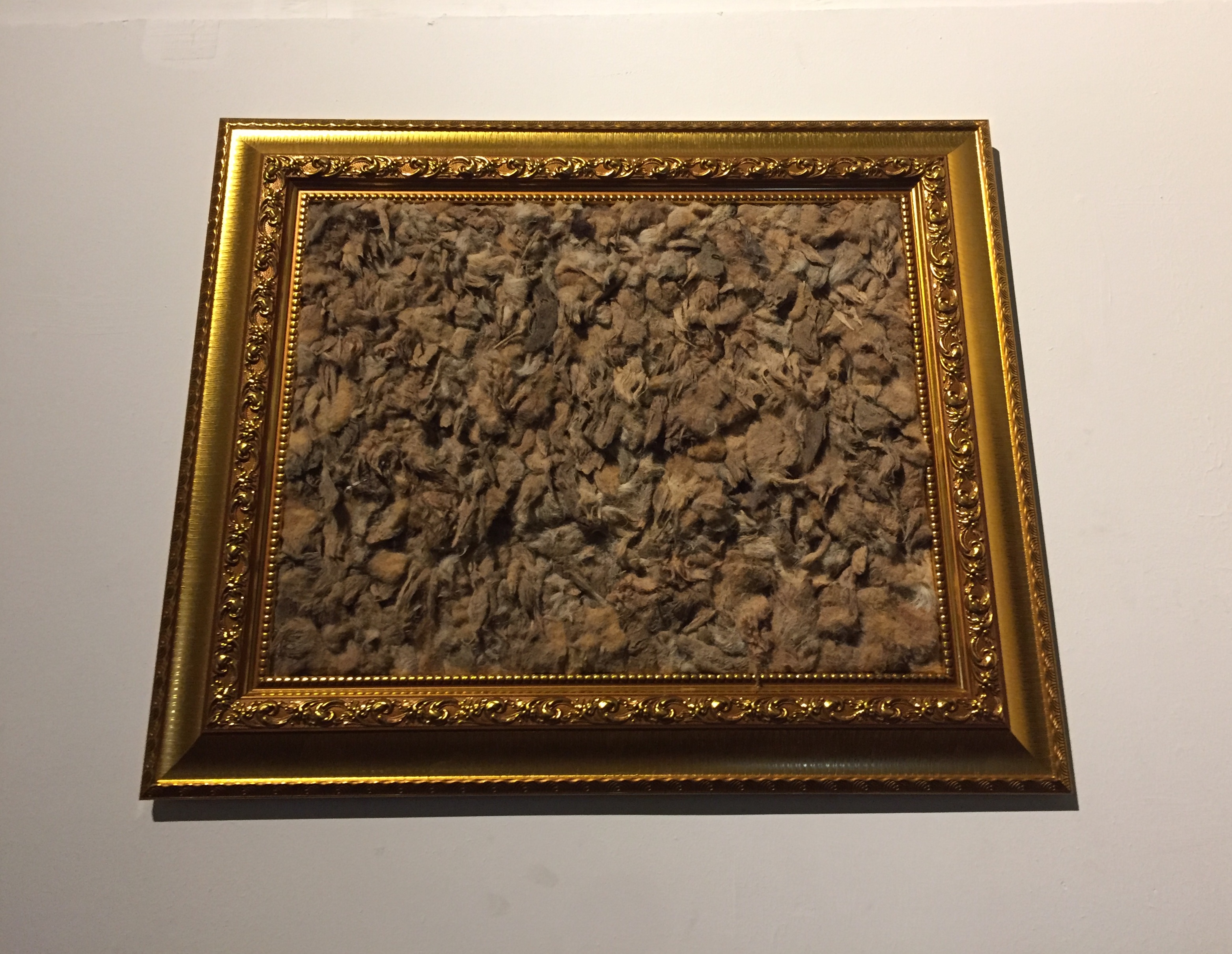
Samak Kosem is an anthropologist who tries to understand the culture of the Deep South by studying the “nonhuman”.Being a Muslim himself but not the local, Kosem chooses four types of the nonhuman: sheep, jinn (supernatural creature in Islamic belief), wave and checkpoint as cases for alternatively exploring the dynamic of the Muslim culture. Sheep(بيريڠ)(2017) is part of his ongoing research presented as documentary film. It demonstrates the socio-cultural and historical contexts of the human-nonhuman coexistence through a story of the wandering stray sheep in Ru-Sa-Me-Lae. The documentary was shown in a group exhibition The Enmeshed at Art Centre Silpakorn University Wang Thapra in Bangkok. Sheep(بيريڠ)was screened on a TV monitor on the floor at the corner of the gallery room while two frames of sheep’s wool were hung on the opposite wall. Kosem took stray sheep from the southern border to the capital Bangkok and put them at the center of his artistic-academic attention. Sheep were a protagonist in his documentary while their matted and stained wool were placed in the beautiful frames.
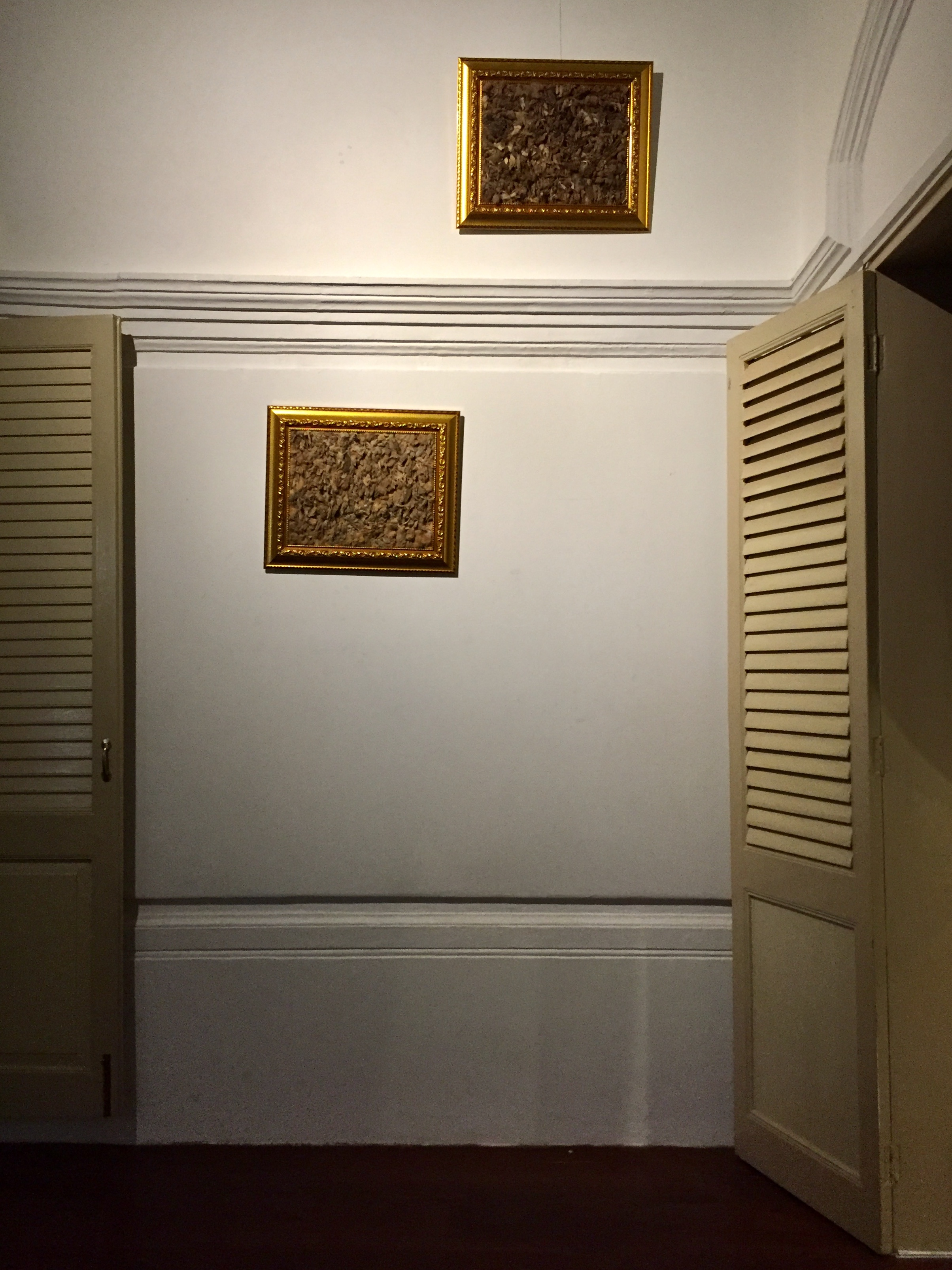
According to the Quran, when Abraham prepared to sacrifice his son for the fulfillment of God’s command, God sent him a ram to sacrifice instead. This event is celebrated and commemorated on the days of Eid al-Adha when Muslims sacrifice animals and divided into three parts: one for the poor and needy; one for relatives, friends and neighbors; and one for the family. In Ru-Sa-Me-Lae, the hierarchy of sacrificial animals begins with cow, goat and sheep. Despite its place in the Abraham narrative, sheep are in the lowest position because of their vulnerability. If sheep are cursed by human or raped by dogs, they can no longer be used in a sacrificial feast. Domestic sheep then turn into stray sheep since they are impure and unwanted. Matted and stained wool is a sign of renunciation.
Even though stigmatized sheep is a result of applying human morality with animals, this state of impurity cannot be redeemed by anyone. The villagers solve the problems of having no eligible sheep for sacrifice by buying sheep from farms or the nearby Datoh village. Kosem chose sheep for his study of the Deep South culture because raising sheep as sacrificial animals could be found only in the Muslim communities here. For him, the relationship between the villagers and sheep in Ru-Sa-Me-Lae does not only represents the local Islamic culture but also echoes the stigmatization of people the Deep South by the Thai state; they are impure and alien in this heavily Buddhist country. Studying the nonhuman – stray sheep- also allows him to understand the Deep South socio-cultural environment by not taking human as center of anthropological research. Kosem used GPS to follow sheep’s trail in the village. The three-kilometer trail started from the roundabout in front of Prince of Singkhla University, Pattani Campus to the post office, Ban Ru-Sa-Me-Lae School, the hospital, Ru-Sa-Me-Lae flea market, the graveyard, the religious school, the community education centerand the two mosques. He found that sheep strolled along Ru-Sa-Me-Lae beach as well.
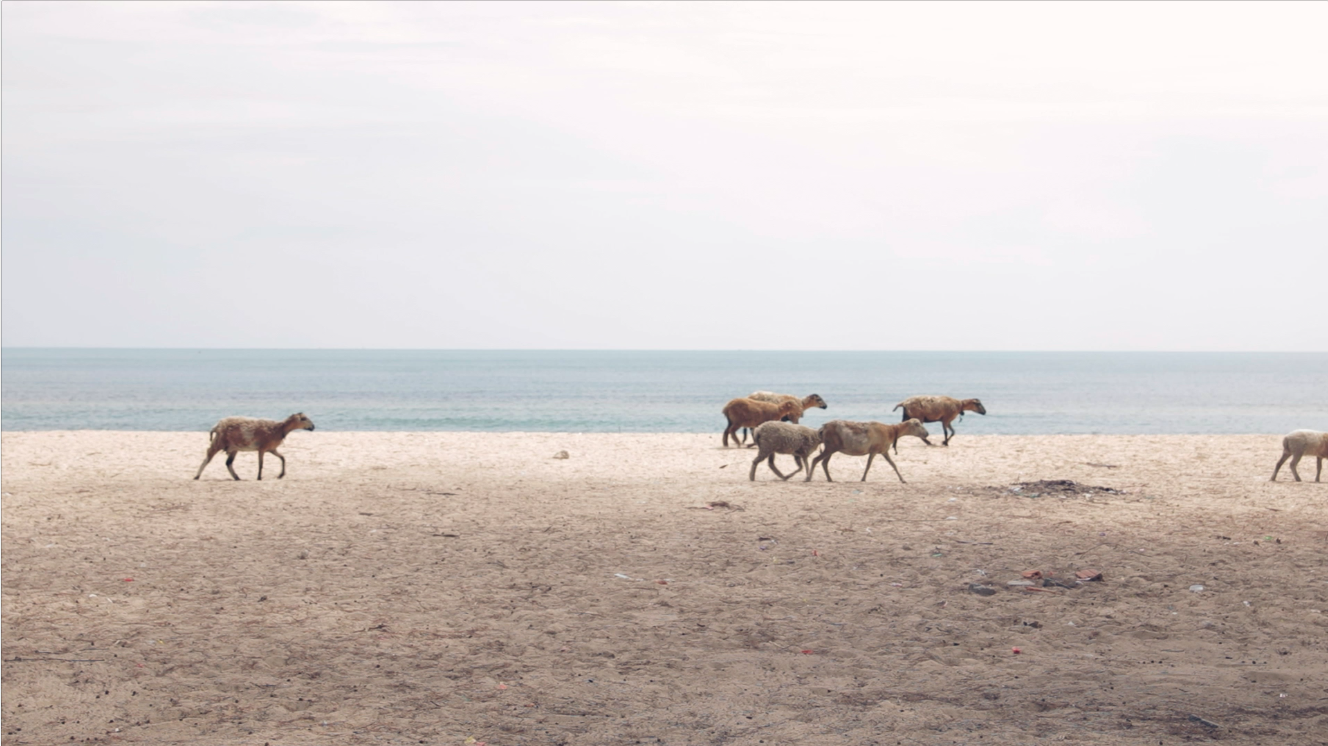
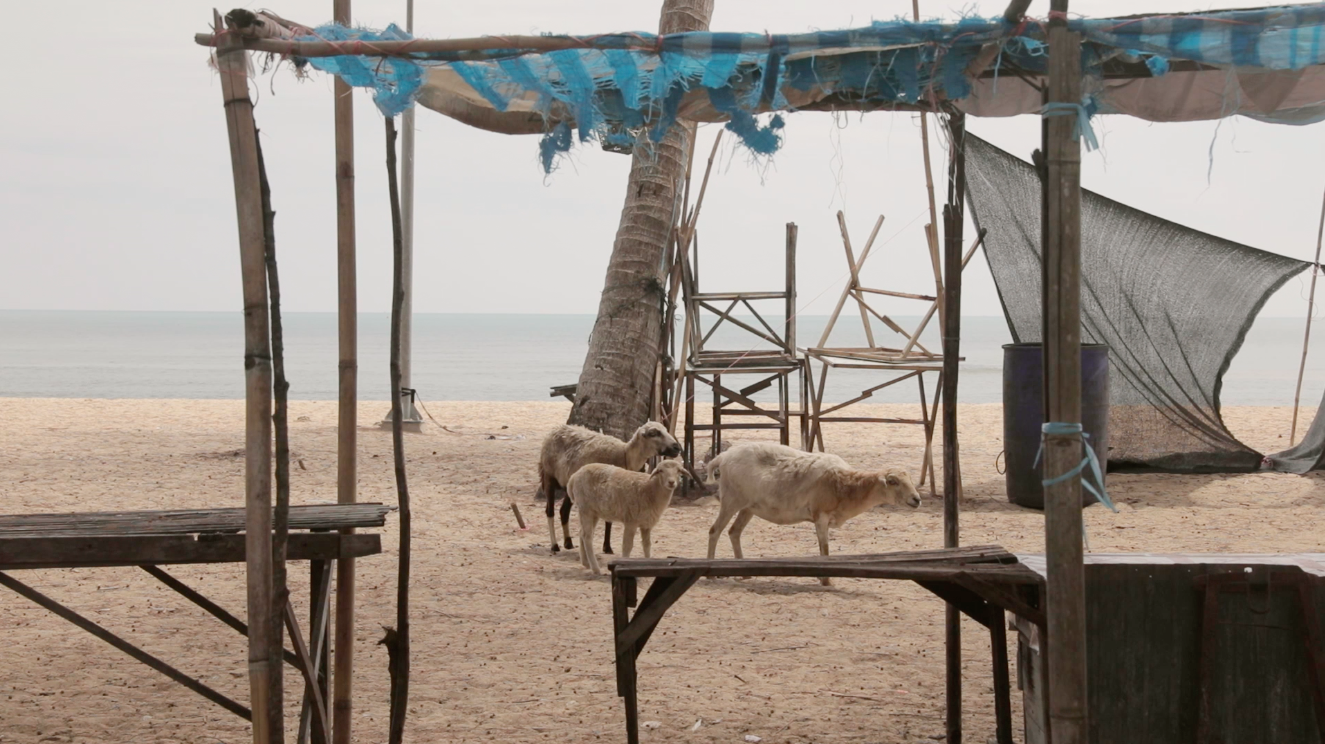
Sheep(بيريڠ) began with an image of a shed on Ru-Sa-Me-Lae beach. A flock of stray sheep slowly came in sight. In the 15-minute documentary, the audience observed sheep’s daily activities by following them as if watching an ordinary animal documentary. What makes Sheep(بيريڠ) different from animal documentary lies not in its physical appearance but the process and idea behind the making. Kosem employed anthropological observation with sheep, making his research documentary an anthropology of the nonhuman. He followed them and recorded their routine. Although he had interviewed many villagers, there was no human being visible in the documentary. The only sign of human was a sound of prayingin a distant that suggested a Muslim environment.
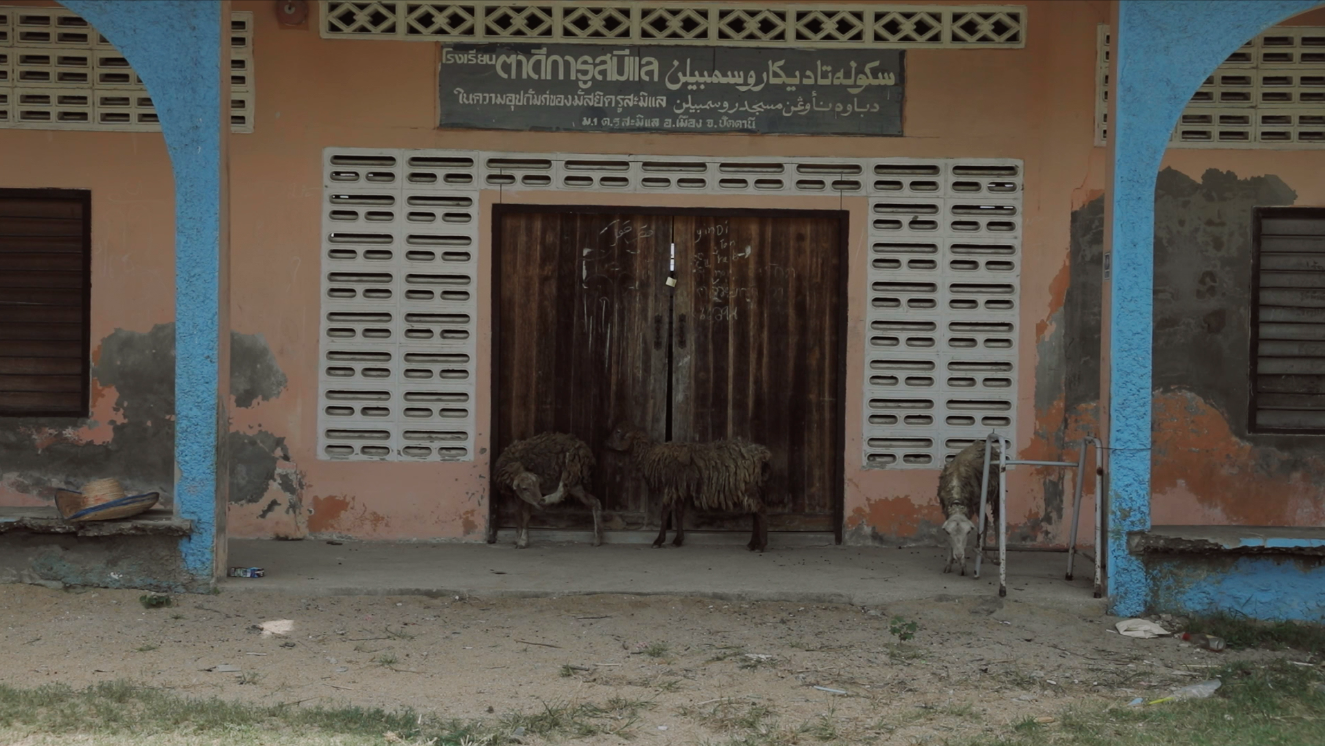
Stray sheep walked around. Their fleece was dirty. They ate mainly garbage. The different position between sheep and another sacrificial animal, goat, was emphasized in the rain scene; the goat stayed under a school roof but the sheep stood outside in the pouring rain.
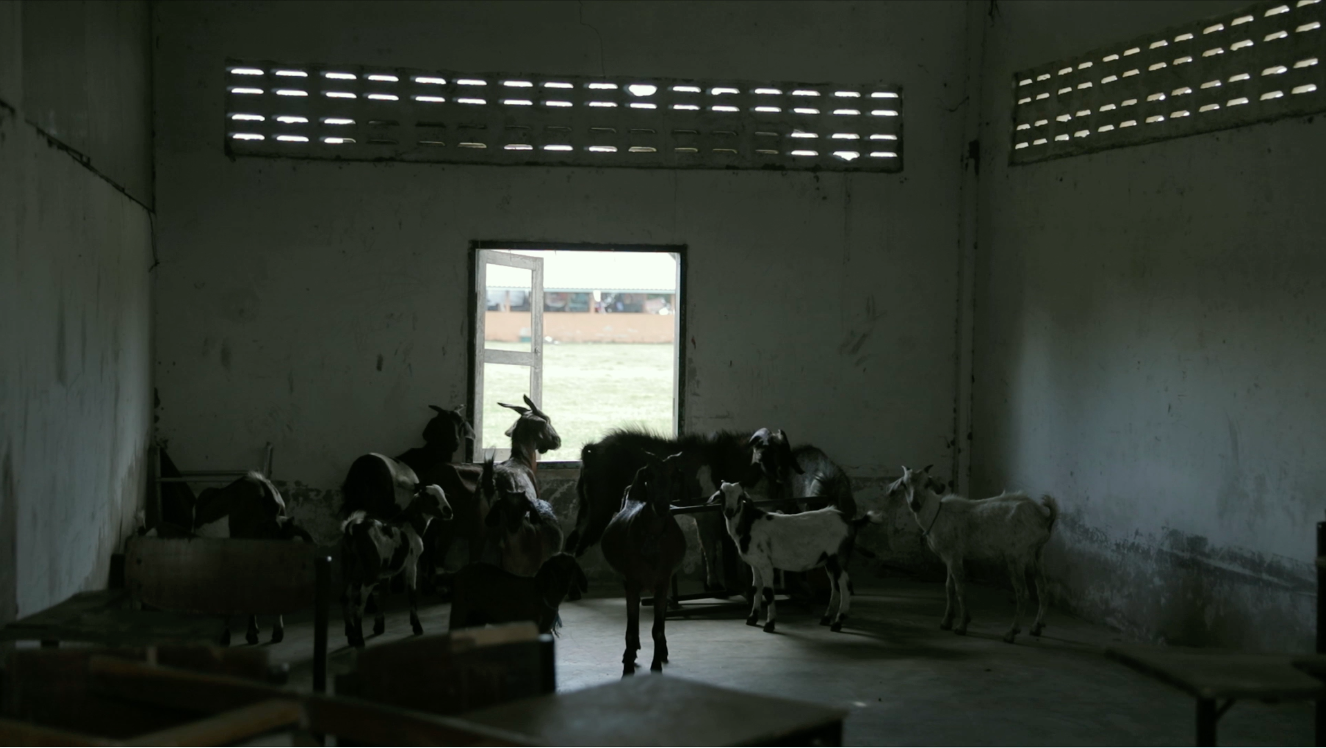
Kosem’s work on the nonhuman is a study of human interaction with the nonhuman from human perspective. The human-animal interaction shown inSheep(بيريڠ) implies hierarchy and religious violence in Muslim society. Stray sheep may be equivalent to the alienated southern Muslim but, more importantly, they also represented another face of the Deep South culture.For Kosem, stray sheep is a metaphor of both the people of the Deep South within the Thai state and violence within the Muslim community. Sheep are victim. If they are clean, they will be sacrifice. If they are impure, they are abandoned. Violence is not explicit here. No guns and bombs that we often see from stories of this region, but behind the peaceful scenes of Ru-Sa-Me-Lae village, cruelty still exists.
Sheep (بيريڠ) by Samak Kosem
Produced by Cattleya Paosrijaroen
Cinematography and Edited by Narasit Kaesaprasit
Music by Pichai Promyong
Year: 2017
Duration: 15 mins
Sheep (بيريڠ) (2017) is aresearch & documentary film project by Samak Kosem. It is shown in a group exhibition The Enmeshed, curated by Penwadee Nophaket Manont, Soifa Saenkhamkon and Supphakarn Wongkaew at Art Centre Silpakorn University Wang Thapra in Bangkok, Thailand between 22 November-24 December 2017.
The Enmeshedis the first exhibition of [R]Ejecting Mantra, a research and archive based exhibition project initiated by Rai.D Collective, a group of curators and cultural workers who aims to carry out exhibition and other projects related to contemporary art with a focus on social, political and cultural issues.
The South Thailand Insurgency is an ongoing conflict centered in the Deep South or the Patani Region in Thailand. It is an ethnic and religious separatist insurgency rooted in the inclusion of the former Sultanate of Pattani to the Kingdom of Siam (now Thailand) in the late eighteenth century. The situation has expanded and intensified since 2004. Local Muslims as well as various separatist insurgent groups have persistently demanded for a level of autonomy from the Thai state. Violence comes from both sides. For more information, please visit https://www.deepsouthwatch.org. Deep South Watch is a platform organization based at Prince of Songkla University, Pattani Campus in Pattani. Established in 2006, Deep South Watch creates a network and platform for a discussion on the Deep South issues.
Tweet
บทความประกอบนิทรรศการ The Broken Ladder โดยวันทนีย์ ศิริพัฒนานันทกูร จัดแสดงที่ Gallery Ver ระหว่างวันที่ 7 กุมภาพันธ์ - 31 มีนาคม 2561
ธนาวิ โชติประดิษฐ (เขียน)
พจนรรฏ สุทธิพินิจธรรม (แปล)
Tanachai Bandasak (ภาพ)
House/Hope is written by Thanavi Chotpradit for the exhibition catalogue 'The Broken Ladder' by Wantanee Siripattananuntakul. The Broken Ladder is on view at Gallery Ver from 7 February to 31 March 2018.
Translation: Pojanut Suthipinittharm
Photographer: Tanachai Bandasak
ละครเวทีเรื่อง “ซูเปอร์ พรีเมี่ยม ซอฟท์ ดับเบิ้ล วานิลลา ริช” (Super Premium Soft Double Vanilla Rich) ของคณะละครเชลฟิตช์ (Chelfitsch) เขียนบทและกำกับโดยโทชิกิ โอกาดะ (Toshiki Okada) เสียดสีสังคมบริโภคนิยมของญี่ปุ่นและความจำเจแต่เสแสร้งของงานบริการผ่านการเล่าความเป็นไปในร้านสะดวกซื้อ 24 ชั่วโมงชื่อร้านสไมล์ แฟคทอรี่ ตัวละครทั้งเจ็ด ได้แก่ พนักงานชายสองคน คนหนึ่งเป็นจอมป่วน อีกคนหนึ่งดูธรรมดา ผู้จัดการร้านแสนดี พนักงานฝึกงานสาวผู้มีอาชีพหลักเป็นนักแสดงละครเวที ซูเปอร์ไวเซอร์จากสำนักงานใหญ่ ลูกค้าสาวขาประจำที่มาซื้อไอศกรีม “ซอฟท์ ดับเบิ้ล วนิลลา ริช” อย่างเดียวทุกคืน และชายหนุ่มนักต่อต้านผู้แวะมาพูดจาก่อกวนที่ร้านทุกวัน ผลัดเปลี่ยนกันออกมาสร้างเรื่องเล่าเกี่ยวกับสังคมสมัยใหม่ที่ทุกคนตกเป็นทาสของวัตถุและการค้าอย่างหลีกเลี่ยงไม่ได้
ไม่ว่าจะตระหนักถึงนัยการเมืองของศิลปะหรือไม่ นิทรรศการ SILPA: TRANSFORM กาย-วิพากษ์ได้ดึงเอาประเด็นที่น่าสนใจที่สุดประเด็นหนึ่งในประวัติศาสตร์ศิลปะไทยสมัยใหม่ อันได้แก่ การแสดงภาพร่างกายขึ้นมา ทว่าน่าเสียดายที่ยังไปไม่ถึงการ “วิพากษ์” ในความหมายของ “critique” คือการวิเคราะห์แจกแจงโดยละเอียดถึงนัยการเมืองของการให้ภาพร่างกายที่เกาะเกี่ยวอยู่กับรอยต่อของความเปลี่ยนแปลงอุดมการณ์ทางการเมือง รูปแบบทางศิลปะหรือ “สไตล์” ที่ส่งผลต่อการนำเสนอภาพร่างกายในยุคที่ศิลปทำงานนั้นสัมพันธ์อย่างแนบแน่นกับสำนึกเรื่องชนชั้นทั้งก่อน ระหว่างและหลังการเปลี่ยนแปลงการปกครอง 2475 เมื่อเป็นเช่นนี้ ถึงแม้จะมีแยกส่วนร่างกายออกมาเป็นภาพร่างมากมายบนกระดานดำ “กาย-วิพากษ์” ก็ยังเป็นแค่ “กายวิภาค” แต่ยังไม่ถึงกับ “วิพากษ์กาย”